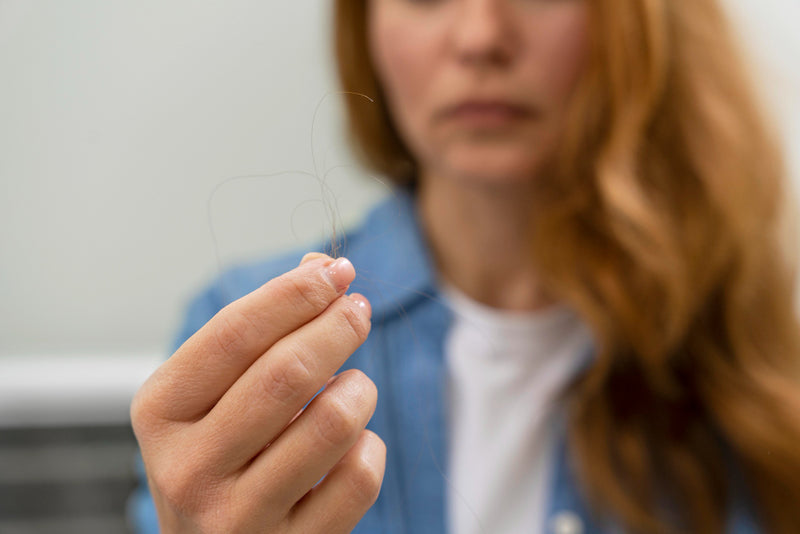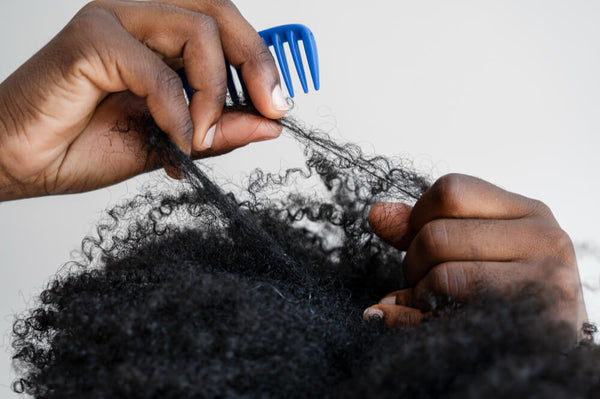If you have been battling with an itchy, flaky scalp and noticed thinning hair, chances are you are dealing with seborrheic dermatitis. The health of our scalp plays a crucial role in the overall well-being of our hair. Unfortunately, conditions like Seborrheic Dermatitis can not only affect the skin on our scalp but also contribute to hair loss.
Seborrheic dermatitis affects millions of people worldwide, causing not only physical discomfort but also emotional distress due to its visible symptoms. But with the right information about this condition and a variety of solutions at your disposal, you can regain control over your scalp health and put an end to unwanted scalp health and hair loss.
This blog will cover the intricate relationship between Seborrheic Dermatitis and hair loss, and explore dermatological solutions to maintain both scalp health and a full head of hair.
Understanding Seborrheic Dermatitis
Seborrheic Dermatitis is a prevalent skin condition marked by red, itchy, and flaky patches on the skin, commonly found on the scalp. These patches can induce inflammation, and if not addressed, may play a role in hair loss. The link between Seborrheic Dermatitis and hair loss is rooted in the inflammatory reaction it initiates. Inflammation has the potential to compromise hair follicles, resulting in diminished hair growth and, in certain instances, hair shedding.
What causes Seborrheic Dermatitis?
The precise cause of seborrheic dermatitis and hair loss remains elusive, yet several factors are thought to contribute to its onset.
- A primary instigator is the overgrowth of a yeast called Malassezia in affected areas. Flourishing in oily environments, this yeast can incite an inflammatory response in susceptible individuals.
- Potential contributors encompass hormonal imbalances (as seen during puberty or pregnancy), stress, immune system irregularities, and genetic predisposition.
- External factors like harsh weather conditions or the use of hair products containing irritants can worsen symptoms.
A comprehensive understanding of the root causes of seborrheic dermatitis is essential for effective management. By identifying and addressing these triggers through targeted lifestyle modification and hair loss treatment for seborrheic dermatitis, it becomes possible to alleviate symptoms and reduce the risk of hair loss associated with this condition. Remember that every individual's experience with seborrheic dermatitis may vary slightly due to unique circumstances or contributing factors specific to their situation.
The Role of Scalp Health in Maintaining a Full Head of Hair
Our scalp serves as the foundation for healthy hair. When the scalp is nourished and free from issues like Seborrheic Dermatitis, hair follicles can thrive, promoting robust hair growth. However, when conditions disrupt the scalp's equilibrium, it can create an unfavorable environment for hair health. This is why addressing seborrheic dermatitis hair care is a crucial aspect of preventing and managing hair loss.
What are the signs and symptoms of seborrheic dermatitis?
The appearance of your skin is likely to differ based on factors such as age, skin tone, and the presence of other medical conditions like Parkinson’s disease or HIV/AIDS.
Typical signs and symptoms of seborrheic dermatitis and cradle cap (seborrheic dermatitis in babies) include the following:
Dry, flaky skin
This can happen in any area of your body affected by seborrheic dermatitis, be it the scalp, face, or chest. The flakes are particularly conspicuous in areas with a rash or hair.
Rash on scalp
This rash may exhibit dryness, greasy scales, or a combination of both. For individuals with a darker skin tone, the rash often appears pink, slightly purple, or lighter than their natural skin tone. In some cases, people with darker skin tones may develop white spots on their scalp. In lighter skin tones, the rash typically presents as red and raised.
Rash on the face
In individuals with darker skin tones, the rash may appear darker than their natural skin tone or as light spots. For those with lighter skin tones, the rash often takes on a red hue. The skin may exhibit both oily and dry areas. Some individuals may develop thin, scaly plaques (raised patches) on their faces.
Burning or itching
The itch is generally mild, though it can become intense, particularly on the scalp. Effectively treating seborrheic dermatitis can alleviate the itch and burning sensation.
Rash on your eyelids (blepharitis)
The oil glands in your eyelids, when inflamed, result in a condition known as blepharitis. This inflammation can cause the skin on the eyelids to become scaly, swollen, discolored, irritated, and itchy. Some may notice the development of yellowish scales between their eyelashes. Although blepharitis can be uncomfortable, it seldom causes harm to the eyes.
Rash around or inside the ears
Seborrheic dermatitis can lead to inflammation in or around the ear. Symptoms may occur as skin cracks, flakes, crusting, or oozing from the ear.
Rash in the skin folds
Extended exposure to moisture can lead to skin breakdown, a condition medically referred to as maceration. This phenomenon is frequently observed in regions such as the armpits, belly buttons, or beneath the breasts. Maceration can result in pain, tenderness, and occasional itchiness or a burning sensation. If left unattended, the skin may eventually split or become susceptible to infection.
Cradle cap
Infants with dark skin tones may exhibit discoloration, flakes, and patches of lighter or white skin on their scalp.
For babies with paler skin tone, the cradle cap typically starts as scaly, oily patches on the head's top, progressing to form a dense, crusty mass that extends across the entire scalp and occasionally onto parts of the face.
Switch to Dermatological Solutions for Hair Loss
In the quest for a full head of healthy hair, prioritizing scalp health is paramount. Understanding the impact of Seborrheic Dermatitis on hair loss empowers individuals to take proactive measures, seeking dermatological solutions that address both the symptoms and the underlying causes. With proper care, you can nurture your scalp and enjoy the confidence that comes with a vibrant and flourishing mane.















